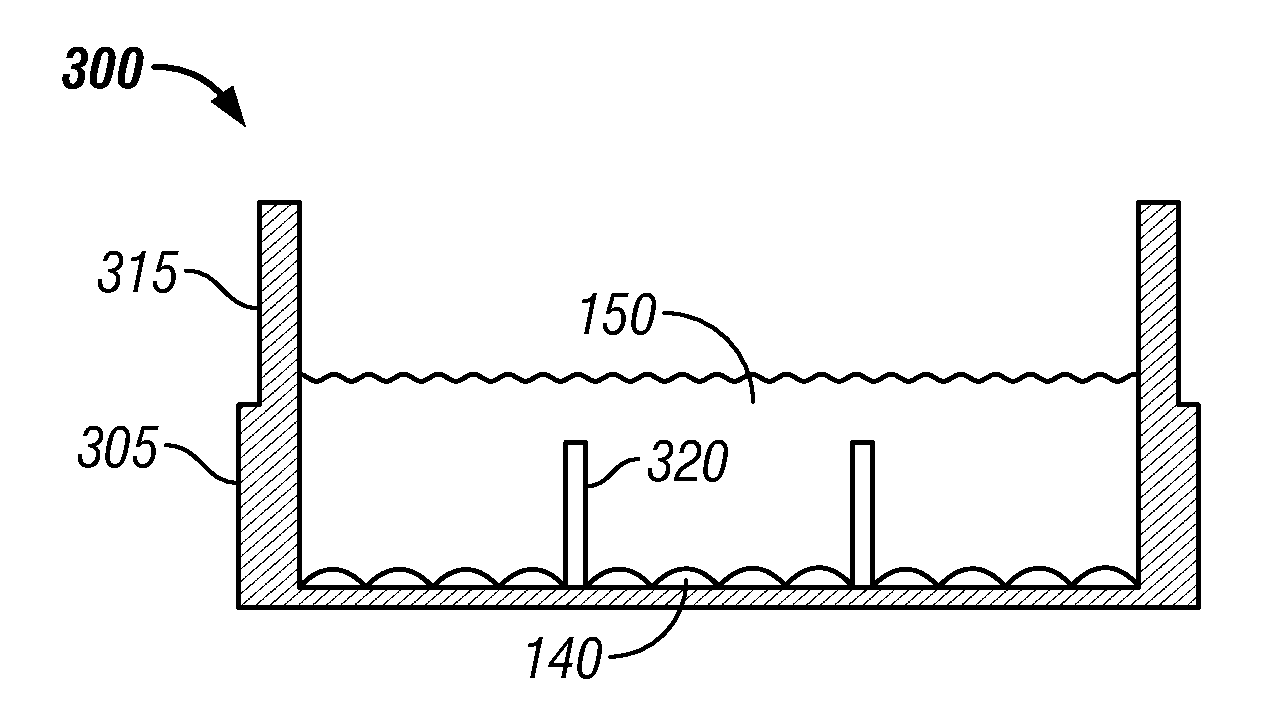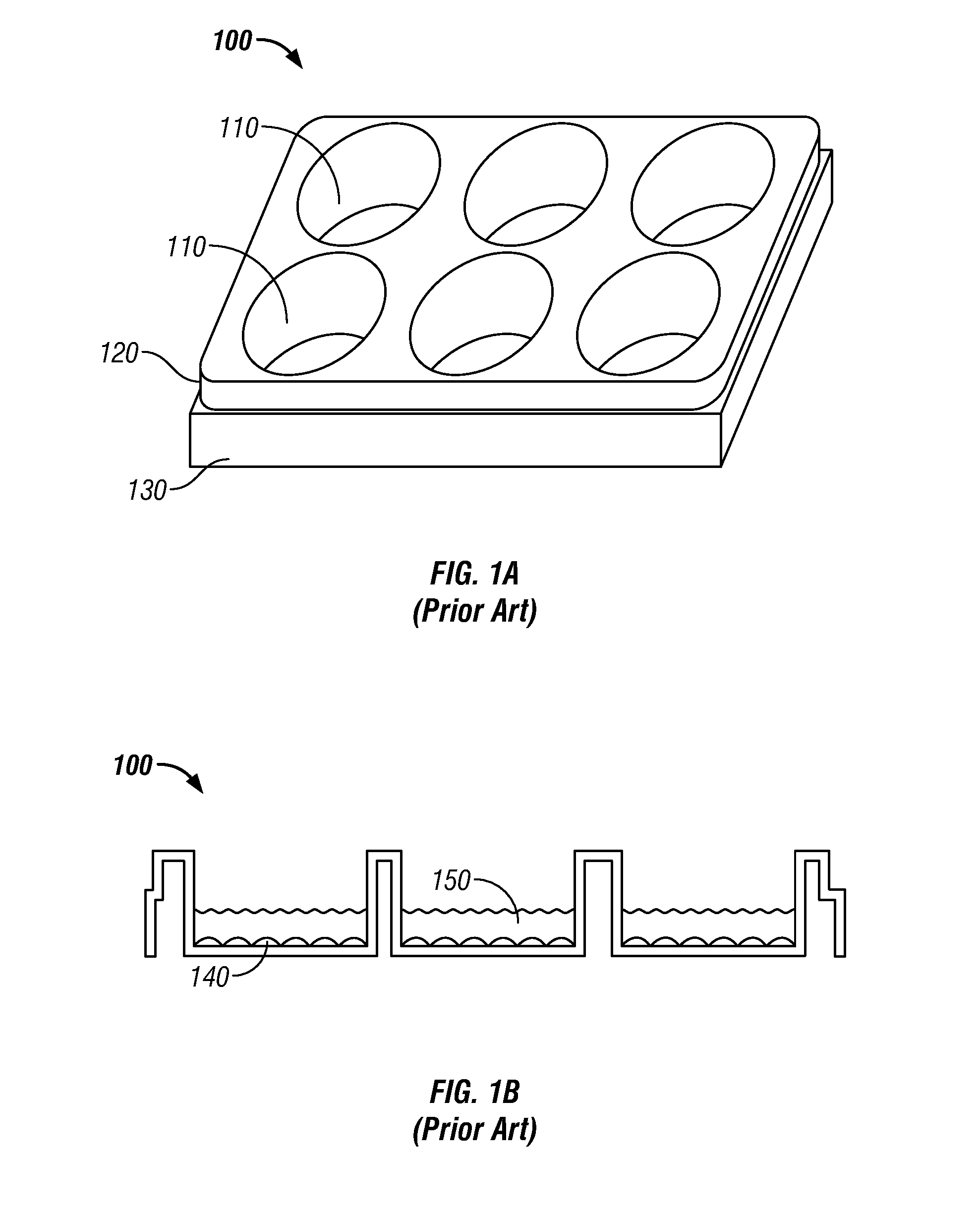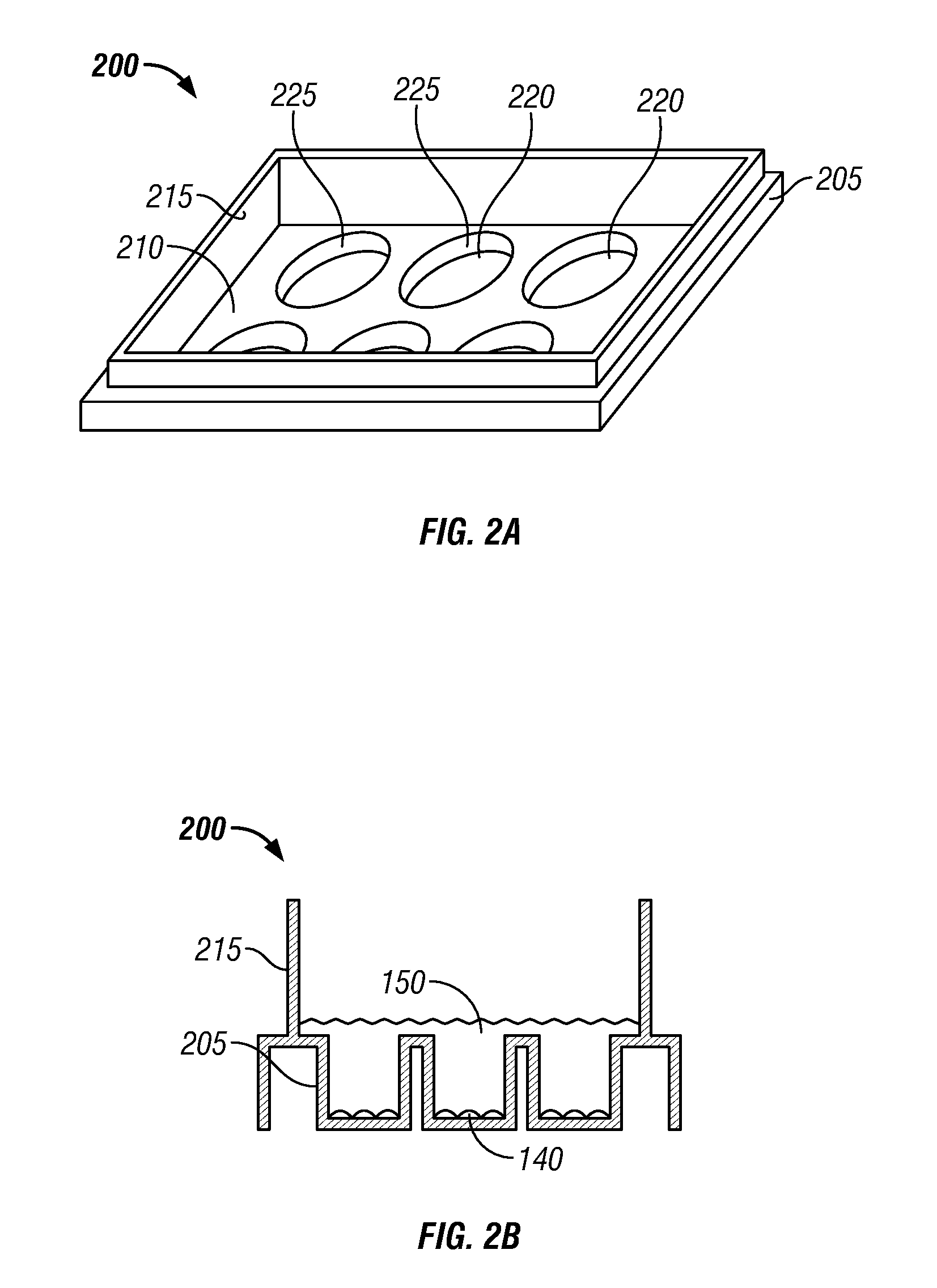Method for Screening of Agents for the Prevention of Hepatitis C Virus Infection with Cell Culture Tool
a cell culture tool and hepatitis c virus technology, applied in the field of cell culture tool screening of agents for the prevention of hepatitis c virus infection, can solve the problems of hcv infection that is often fatal, ribavirin is only moderately effective, and infects 170 million individuals worldwid
- Summary
- Abstract
- Description
- Claims
- Application Information
AI Technical Summary
Benefits of technology
Problems solved by technology
Method used
Image
Examples
Embodiment Construction
[0088]Embodiments of the tool 200, 300, 400 embodying the current invention are shown in FIGS. 2A-5B and FIG. 10. The tool 200, 300, 400 includes multiple wells within each a type of cells can be cultured, but each well can be overfilled or flooded, so that the cells in the different wells can share a common medium. This is achieved by configuring each well as an indentation inside a larger plate (FIGS. 2A and 2B), placing short partitions inside a larger plate (FIGS. 3A and 3B), or placing small inserts inside a larger plate (FIGS. 4A and 4B). However, this invention can be applied to any multi-well format with any number of wells per plate.
[0089]Referring to FIGS. 2A and 2B, a multi-well tool 200 of the present invention comprises a body 205 having a substantially planar top surface 210, and an outer wall 215 extending from the body 205. Six wells 220 are formed in the body 205 by depressions in the top surface 210. Each well 220 has a containing wall 225 that may slant downward f...
PUM
| Property | Measurement | Unit |
|---|---|---|
| temperature | aaaaa | aaaaa |
| height | aaaaa | aaaaa |
| height | aaaaa | aaaaa |
Abstract
Description
Claims
Application Information
 Login to View More
Login to View More - R&D
- Intellectual Property
- Life Sciences
- Materials
- Tech Scout
- Unparalleled Data Quality
- Higher Quality Content
- 60% Fewer Hallucinations
Browse by: Latest US Patents, China's latest patents, Technical Efficacy Thesaurus, Application Domain, Technology Topic, Popular Technical Reports.
© 2025 PatSnap. All rights reserved.Legal|Privacy policy|Modern Slavery Act Transparency Statement|Sitemap|About US| Contact US: help@patsnap.com



